
Iveco Daily Panel Van Review

Introduction
You might see plenty of large Iveco trucks on the road, hauling goods internationally alongside Scanias, Volvos and DAFs. Its van business is booming too, where the company takes what’s made it such a force in haulage and shrinks that down to a more manageable size.
Built around a separate chassis with a body bolted on top of it, it offers impressive flexibility, supersized options and, on some models, the ability to reach places other vehicles can only dream of.
Select's rating score* - 3.8 / 5
At a Glance
The Iveco Daily might well be the most flexible van on the market. Aside from the panel van that we have under test here, you can specify the vehicle as a crew van, chassis cab, tipper, minibus, and even a rugged go-anywhere 4x4.
Sticking with the panel van. There’s a huge array of body sizes, engine options and payloads, with gross vehicle weights going right up to seven tonnes.
Iveco’s able to do this thanks to the heavy-duty truck derived chassis that its underneath. That works incredibly well in many applications, but is it just a bit too much for a van? We find out.

Key Features
It would be easy to talk about the Daily’s range of engines, including compressed natural gas-powered units. Likewise, the flexibility of the van, with somewhere around 8,000 possible specifications, could be a highlight. Even covering off the tough-as-boots 4x4 model that could probably double as a military vehicle would be an obvious choice.
However, it’s the invisible stuff that really makes the Iveco Daily a compelling vehicle. Iveco is best known for its big trucks that pound the pan-European roads all day long, and it’s the backup and support that these models get that filters down to the humble van.
That means the dealerships are open over extended hours, to ensure your daily workload isn’t impacted by having to stop for a service. Service intervals themselves are kept impressively long, reducing downtime further. There are telematics options that can alert Iveco technicians to a problem before you’re even aware there’s an issue, allowing for pre-emptive maintenance that, again, keeps your downtime and costs low.
And that’s just the tip of the iceberg. Iveco seems to have something of an obsession with not seeing you at their workshops. You pay for that with higher monthly rates than some rivals, and the heavy-duty nature of the van means it’s not light on fuel, but the savings on your ownership costs should ensure it’s cost-competitive as well as reliable.
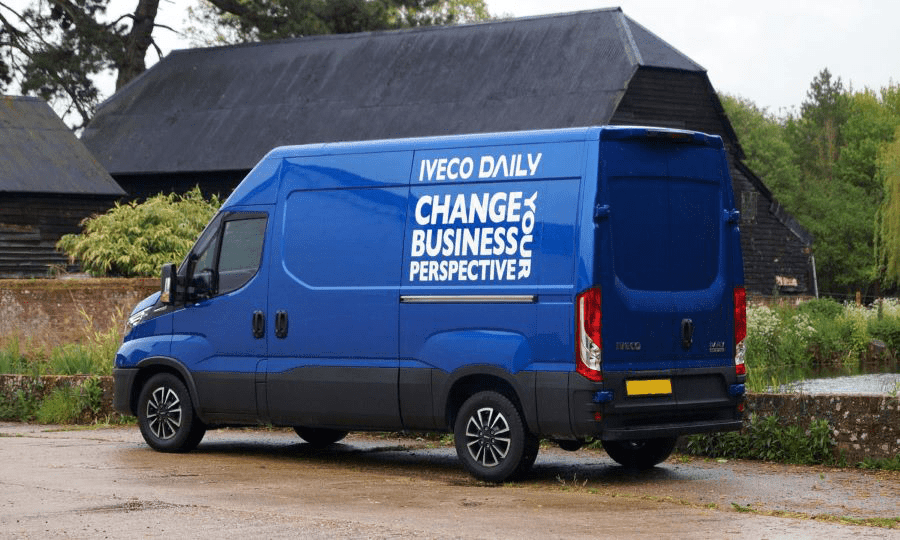
Performance & Drive
There’s a wide range of engine options available for the Iveco Daily, mostly split between diesel-powered 2.3-litre and 3.0-litre options. Outside of those, there are compressed natural gas and electric options too, leaving pretty much every option covered.
The traditional diesel units range from 116 to 210hp, but it’s the big seller, the 136hp 2.3-litre model, that we have to test here. With 350Nm of torque to pull the van along, there’s enough grunt to keep up with traffic.
In fact, there’s more than enough; powering the rear wheels through an eight-speed automatic gearbox, the Daily positively leaps off the line, even with a half tonne load in the back. Gear changes are smooth, with little gap between ratios, leaving progress unhindered. As standard, there’s a six-speed manual gearbox that’s a little vague but otherwise smooth, but upgrading to the auto is worth it and, thanks to the mystery of leasing rates, will likely only cost slightly more each month.

It does take rather a long time to reach motorway speed but, once there, it’s quiet, bar a fair bit of wind and tyre roar. The engine is either very quiet or the noise is drowned out by other competing sounds.
At those speeds, the van is a little lumpy hen unladed. It’s designed to be a heavyweight (reaching gross vehicle weights of seven tonnes at the top of the range) so the suspension is suitably stiff. That can lead to it being a little bit of a handful on a damp, bumpy road when light, but it’s transformed with some weight in the back.
This test model has a payload limit of 1,232kg and was tested with a 500kg lump of metal in the back, and that left it feeling remarkably composed. A suspended driver’s seat option makes it even smoother and gets you closer to that trucker experience.
In the city, it’s big but not unwieldy. Light steering (made even lighter at the press of the ‘City’ button’ and big mirrors make manoeuvring a cinch.
It might not be quite as compliant or engaging as a Mercedes-Benz Sprinter, but you’ll never know it’s built around a tough truck chassis if we hadn’t have told you.
Running Costs
It’s a game of two halves when it comes to keeping the Daily running. On the one hand, there are the huge service intervals - you can drive for more than 37,000 miles between services which will keep your time off the road to a minimum - and a lengthy warranty period. On the other, it’s a heavy truck-based van that’s thirsty on fuel.
An official economy figure of 27.6mpg isn’t anything to get excited about, especially when we’ve seen diesel charged at more than £2 a litre, but our time with the van saw it return an impressive 27.3mpg - that’s remarkably close to the official figures and suggests real-world economy won’t be too far removed. Tyres that offer low rolling resistance, electric power steering and a new stop/start system are all steps Iveco’s taken to keep fuel use as low as possible.
Iveco has also worked to keep other costs down; the front bumper is split into three pieces, for example, which means that any minor knocks or scrapes should see lower repair costs.
There’s even an innovative ‘connectivity box’ available as an option. This records all sorts of data about your van and sends it off to Iveco. As well as offering ‘smart’ reports on vehicle and driver behaviour, it also keeps an eye on the van for early warning signs of impending problems. Ivecoi’s technical people will then get in touch and, apart from offering routine service appointments and the like, will proactively work to get your vehicle prepared before disaster strikes.
The telematics service comes from the truck division, where thinking is all about reducing downtime and minimising costs. Part of that is having truck-friendly dealers, so you’ll find long opening hours and a 24-hour breakdown service should it all go horribly wrong.
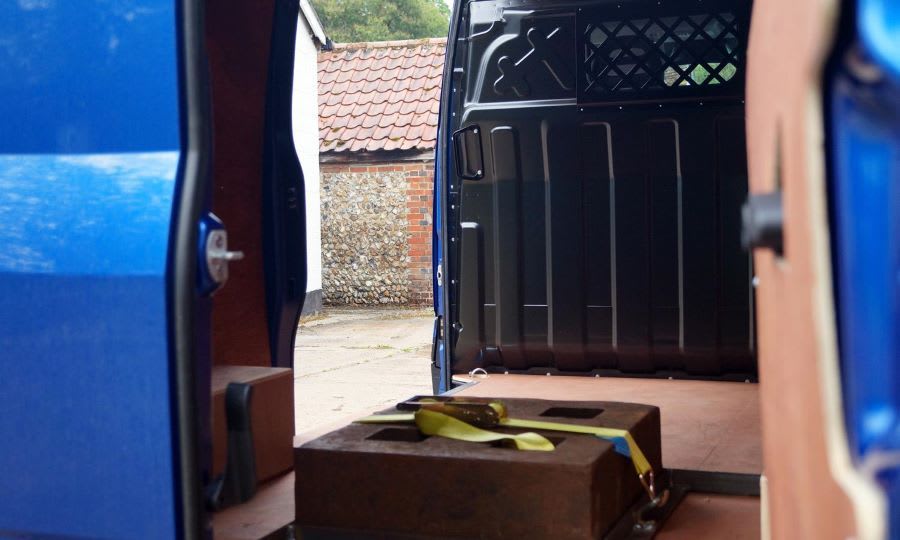
Interior and Technology
Sit inside the Daily and you’ll notice the driving position is rather more truck-like than car-like, which is undoubtedly related to its heavy-duty construction. It’s comfortable for a long journey but might get a bit tiresome for those jumping in and out on multi-drop routes.
What’s also a little tiresome is the cabin design. It’s dated, with a small infotainment screen and swathes of hard plastics everywhere. The last update saw a new more compact steering wheel added to the van, along with an electronic parking brake that frees up a lot of floor space between the seats, but there’s little change to see since its introduction in 2014.
There’s also a digital screen between the dials in the instrument binnacle. It’s not that intuitive, but the information available is handy, ranging from the usual things you would expect (economy, distance to empty, etc.) to the status of safety technology.

The infotainment system, while small and, again, a little dated, does include Android Auto and Apple CarPlay connectivity, so it’s ultimately easy to use and allows you to stream your own music or podcasts.
Hiding behind the dull-but-worthy dashboard is an impressive range of storage options for your personal items. The dashboard top is made up almost entirely of lids covering handy storage areas, while the centre section offers a few options - chief amongst those will be a slot ideally suited to swallowing paperwork. There’s even a small shelf above the glove box and multiple cubby holes in each door. The cupholders were less convincing, angled in such a way that a taller cup can work its way loose under power.
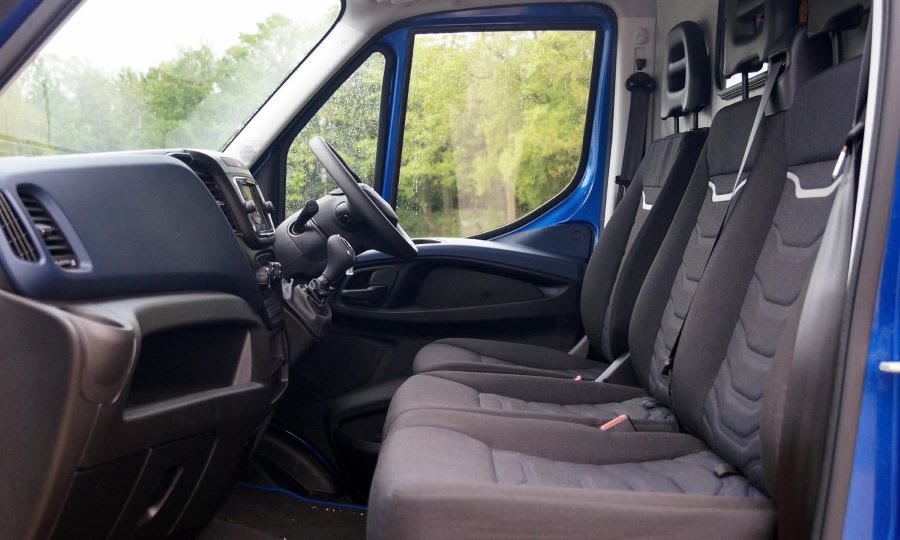
Payload and Practicality
The Daily’s heavy-duty underpinnings means there’s a huge array of options for the load area. Three wheelbase options, five vehicle lengths, and three roof heights mean you can extend the cargo capacity from 7.3m3 all the way to 19.6m3.
At the same time, gross vehicle weights can range from 3.5 tonnes to seven tonnes, which translates to payload limits from just over a tonne to figures in excess of four tonnes.
Our test model, a middle length (3,520mm wheelbase, 5,600mm overall length) model with the middle height roof (the H2 is 1,900mm high) has a capacity of 10.8m3 and a maximum payload limit of 1,232kg, which will cover most applications - especially for those limited to driving vehicles up to 3.5 tonnes. However, it’s at that lower limit that the strengths of the Daily work against it, the chunky and heavy build limiting the available payload capacity.
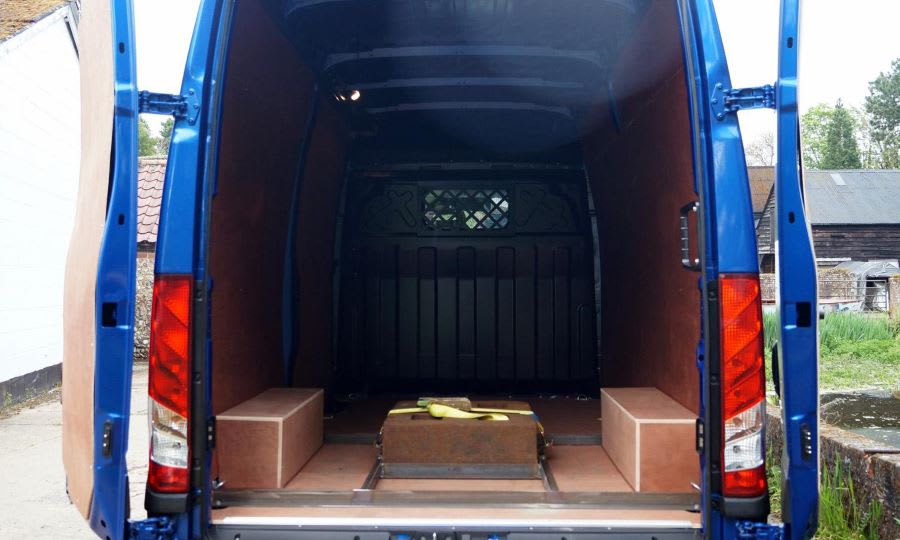
Safety
There’s a lot of safety technology and equipment available for the Iveco Daily, but you’ll need to pay for most of it. There are the basics you would expect, such as a stability control system, but many of the essential items anybody with a duty of care to follow would want are optional.
Our test model featured adaptive cruise control, lane departure warning, lane-keeping assist, crosswind assist, automatic headlights and wipers, a reversing camera, fog lights and tyre pressure monitoring. That list added £2,170 to the price tag. Automatic emergency braking is also relegated to the options list.
Much of the tech is left off the van as standard to allow fleet managers to specify what they feel is needed, balancing the cost of equipping the Daily against the reduced downtime and repair costs. Interestingly, where fitted, the fleet manager can prevent the driver from overriding the systems. Even where items are standard, many of the systems are interlinked to aid safety; the electronic handbrake won’t disengage without the seatbelt being clicked into place.
Options
There are a couple of trim levels to choose between when you’re speccing your Iveco Daily. Business and Business Premium are likely to be the most popular, with the entry-level model featuring manual air conditioning, cruise control, front fog lights and electrically heated & adjustable door mirrors. The Premium trim boosts that with automatic climate control, a DAB radio and a dual bench seat with table, amongst other useful additions.
Beyond that, there’s a swathe of safety kit you can add to the van, as Iveco has opted to make even the most essential equipment optional.
It’s then possible to extend the Daily’s specification almost as far as you can imagine. The options list is almost endless, with everything from wireless charging options for a smartphone and alloy wheels to rear air suspension and an electromagnetic retarder. If you think it might be helpful to van life, then Iveco probably has it available on the list.
Rival Vans
The Ford Transit is the big daddy of the van world, but even the might of Detroit can’t hold a candle to the flexibility of the Iveco Daily. That said, the Transit is popular for a reason; it offers great value for money, is available and can be serviced in every town, and has a wide range of body styles and payload options.
A Mercedes-Benz Sprinter is a more premium feeling option and backs that up with some impressive technology, a superior cabin and the promise of legendary reliability. The quality isn’t quite as high as you might hope for though, and economy isn’t its strongest point.
Opting for a Volkswagen Crafter will see you with a van that’s more car-like than any other, at least from the driver's seat. Comfort is impressive, as are the safety features, but it’s not great on fuel and, oddly for a vehicle that is built to carry loads, the cabin lacks much storage space for the drivers' effects.
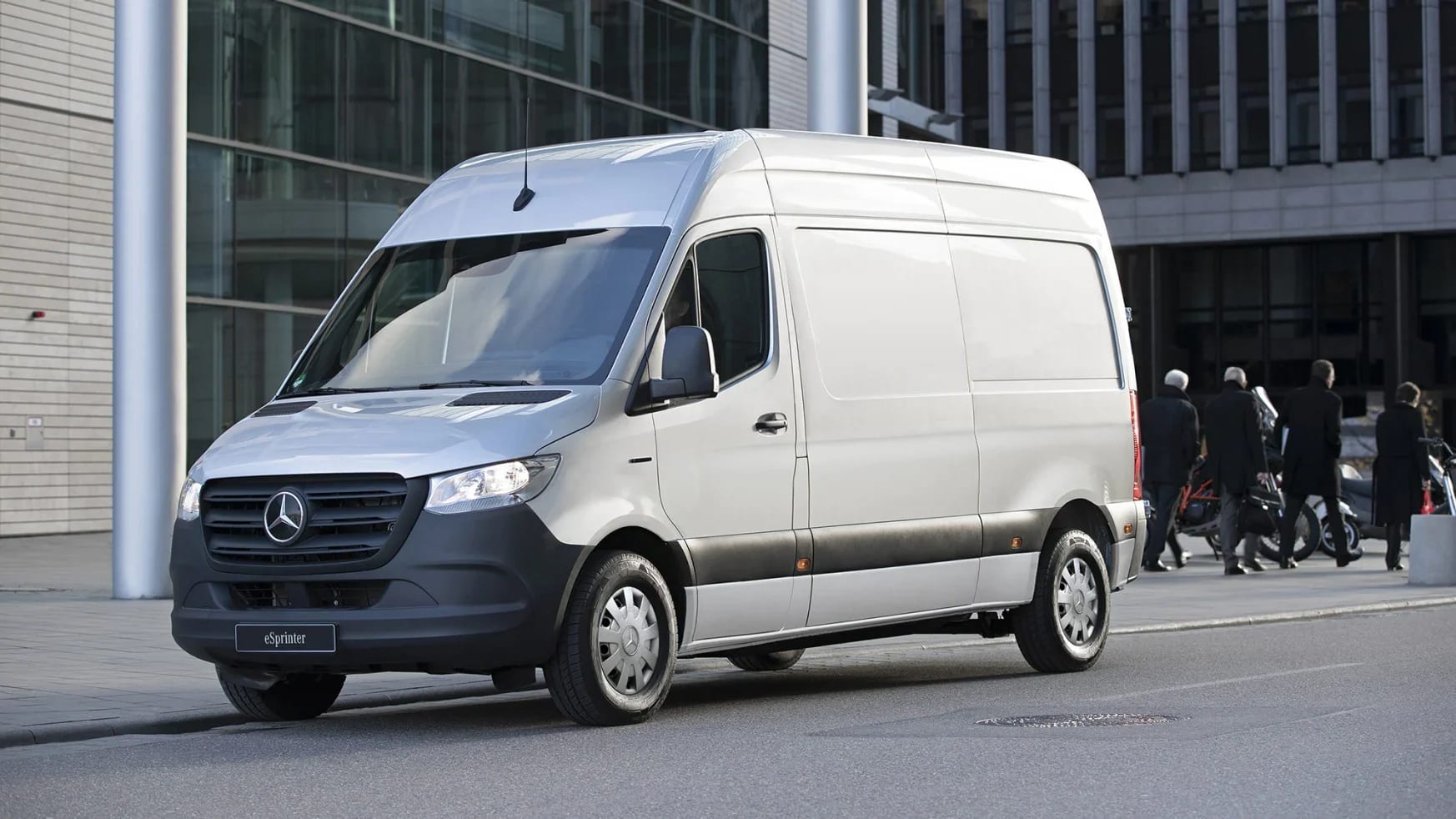
Verdict
Get to the extreme ends of the Iveco Daily range and you can have a seven-tonne behemoth that is the largest panel van you can buy in the UK. At the other end, the heavy-duty chassis means that the 3.5-tonne model doesn’t quite cut it if payload capacity is important but, aside from that, few vans offer the dependability, manufacturer backup and flexibility of the Iveco Daily.
Despite higher fuel costs than its rivals, and a list price that veers towards the extreme at times, the cost savings available from the long service intervals, low repair bills and exceptional support likely mean that the Daily will make more sense than you first think.
Where to next?
View our latest Iveco Daily Panel Leasing Deals - from just £441.18 per month inc VAT**
Looking for a great deal? Check out our incredible range of van lease deals
New van or pick-up? Read our latest Van Reviews and find the right model for you
Want to know more about van leasing? Take a look at our comprehensive Van Leasing Guides
Interested in everything motoring? Why not catch up on all the latest Leasing News.
*Score based on Select’s unique meta score analysis, taking into account the UK’s top five leading independent car website reviews of the Iveco Daily Panel Van
**Correct as of 10/01/2023. Based on 9 months initial payment, 5,000 miles over a 48 month lease. Initial payment equivalent to 9 monthly payments or £3,970.62 Ts and Cs apply. Credit is subject to status.













